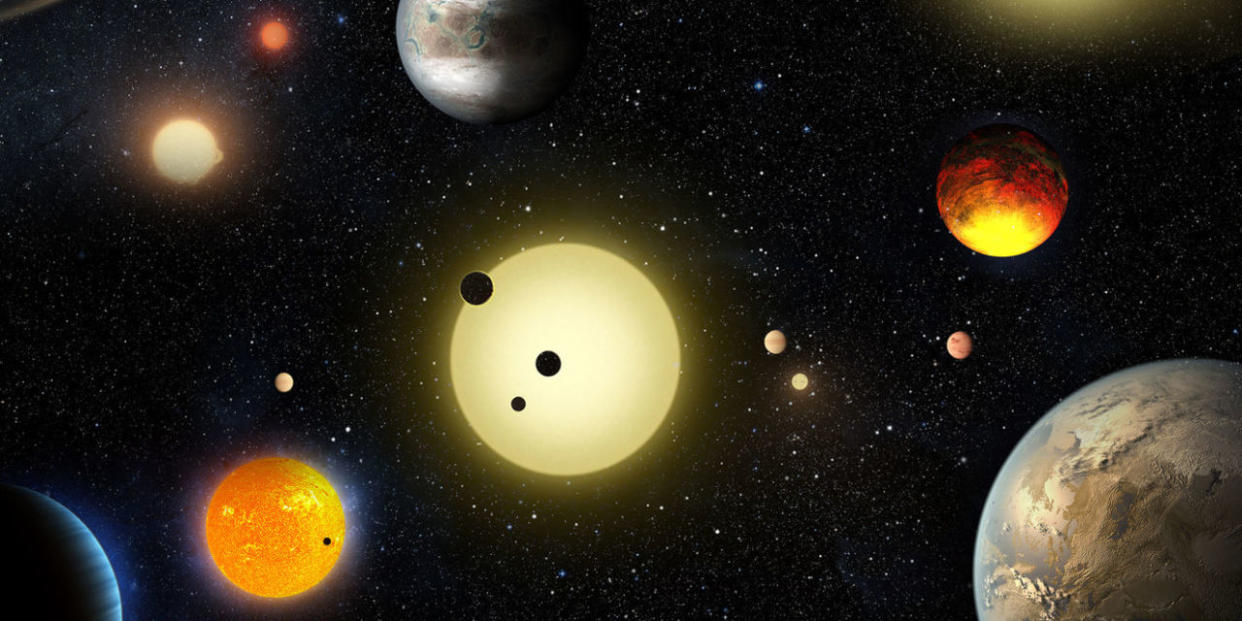NASA's Kepler Space Telescope Spots 219 Possible New Planets

NASA recently announced that its Kepler space telescope has updated its catalogue of extrasolar planets, or exoplanets, with 219 new candidates. Ten of these newly spotted exoplanets are nearly the size of Earth and orbit in their star's habitable zone, meaning temperatures could be right for liquid water to exist on the surface.
The new announcement adds to a long list of planet candidates discovered by Kepler since the telescope achieved first light in April 2009. The Kepler catalogue now includes 4,034 planet candidates, 2,335 of which have been verified as exoplanets by follow-up observations from other telescopes. Of these thousands of discovered planets, about 50 are roughly Earth-sized and orbit in a habitable zone, and more than 30 of those have been verified as bona fide planets by additional observations.
"The Kepler data set is unique, as it is the only one containing a population of these near Earth-analogs–planets with roughly the same size and orbit as Earth," said Mario Perez, Kepler program scientist at NASA, in a press release. "Understanding their frequency in the galaxy will help inform the design of future NASA missions to directly image another Earth."
Kepler detects exoplanets by measuring a temporary reduction in light emissions coming from a star when the planet moves in front, or transits. These measurements can also be used to determine the approximate radius of the discovered exoplanets, work that is generally done by additional telescopes such as the W. M. Keck Observatory in Hawaii.
The researchers found that smaller exoplanets fall into two distinct categories: Earth-sized planets and gas planets smaller than Neptune, commonly called mini-Neptunes. Very few planets smaller than Neptune fall outside of these two categories. Planetary scientists hope to use this growing repository of data to learn about planet formation throughout the galaxy and to answer a more enticing question: How many planets like Earth are out there?
"We like to think of this study as classifying planets in the same way that biologists identify new species of animals," said Benjamin Fulton, doctoral candidate at the University of Hawaii and lead author of a study about the updated Kepler catalogue. "Finding two distinct groups of exoplanets is like discovering mammals and lizards make up distinct branches of a family tree."
The next step in exoplanet study is to determine what elements are present in these alien atmospheres. It will be difficult, but a new generation of telescopes should be powerful enough to perform spectral analyses of the light from stars as it is filtered through the atmospheres of distant planets, revealing the chemical composition. Biosignatures such as abundant oxygen or complex organic molecules could be indicators of life on alien worlds.
In the meantime, Kepler forges ahead, cataloguing every exoplanet it can spot. It may be that one of those 4,000 entries in the Kepler catalogue is home to extraterrestrial life.
You Might Also Like

